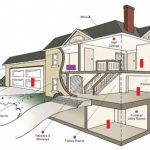What Western New York Homeowners Need to Know about CO Detectors

While you may remember to ready for Western New York winter with tasks that range from cleaning out your gutters to prepping your patio; some homeowners may not even think about a crucial task that could save your family members’ lives. That task is making sure your Buffalo area home is properly equipped with carbon monoxide detectors.
As a tasteless, odorless and deadly gas, carbon monoxide is the byproduct of combustion. It can seep into and accumulate in your home from poorly maintained heating systems. A home inspection can help assure your CO detectors are properly installed and placed, or you can conduct a review of your CO detectors on your own.
Your first step is to make sure to follow all manufacturer instructions as well as regulations of the building and fire code in the Buffalo area. The National Fire Prevention Association recommends installing CO alarms high on a wall or ceiling area in a number of strategic locations.
Where to Place CO Alarms
- On every level of the home where a source of CO exists, such as fireplaces, cooking appliances, and other appliances that burn fossil fuel
- Within 15 feet of each sleeping area in the home, which may require more than one alarm on floors with multiple sleeping areas
- In hallways leading to attached garages
- In living area directly above attached garages
- At least 15 feet away from fossil fuel burning appliances
- At least 5 to 10 feet away from bathrooms and kitchen appliances
New York State Regulations
Homes constructed after Jan. 1, 2008, in New York state must adhere to the following CO alarm regulations:
- Each sleeping unit requires a CO alarm
- CO alarms must be hardwired to the home’s electrical source and contain a battery backup; do not use plug-in type CO alarms
- CO alarms must be interconnected, so when one alarm sounds, they all sound
Following the CO alarm suggestions is more than just a good idea; it’s a crucial effort that could end up saving lives.


